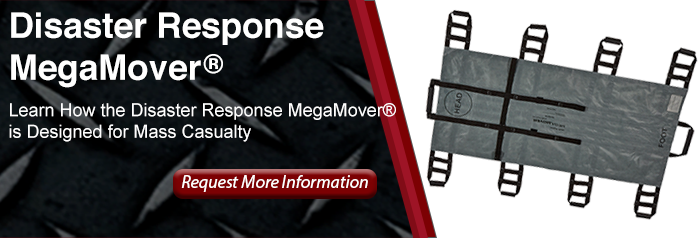
Mass casualties require mass coordination by first responders. One of the most vital areas of this coordination in the treatment of victims is triage. Fortunately, experienced triage experts have been working to improve specialized response protocols to ensure that treatment is prioritized by those who need life-saving care first, while also improving the transportation times and safety of all involved. It is important that first responders stay up to date on the latest triage tactics for active shooter and mass casualty incidents. These tactics are designed to increase efficiency and determine the people who need help the most.
Explore the latest in triage protocols with START and SALT.
Simple Triage and Rapid Treatment
START stands for Simple Triage and Rapid Treatment. Simple and fast are key components to this protocol as the focus is to assess three primary status areas within 60 seconds of contact. Can a victim walk (need for transport), how is the person's mental status (conscious, altered, aware), and what is the persons hemodynamic status (blood and breathing). This rapid assessment helps quickly assign minor, immediate, and expectant priorities for care, which also helps prioritize the often thinly-stretched ground resources available on the scene.
Sort, Assess, Lifesaving interventions, and Treatment
SALT is based from a military combat zone protocol, representing the treatment protocol emphasizing sort, assess, lifesaving interventions and treatment/transport. Another way to consider this is to think about this as the tourniquet-and-go protocol. The goal of this protocol is to rapidly assess and treat hemorrhage, and prioritize whether bleeding or physical location is the greatest threat. Once assessed and stabilized, the goal is safe and quick transport back to a triage area for further medical care.
For any treatment protocol during a mass casualty, two primary things are always in the forefront: stabilize the patient in the safest location possible and transport the patient to first responders who can provide the needed treatment. To achieve this protocol with the greatest speed and efficiency, your response team needs the right equipment. You'll want to avoid heavy items that take up too much space, and stay away from awkward wheels that can't navigate uneven terrain.
Consider the MegaMover® Tactical and MegaMover® Disaster Response Patient movers to help first responders transport patients safer and more efficiently. Learn how this cutting-edge patient transport device emphasizes ease of use, while providing a strong and adaptable transport for any mass response setting. Learn more online with Graham Medical and the MegaMover®.

